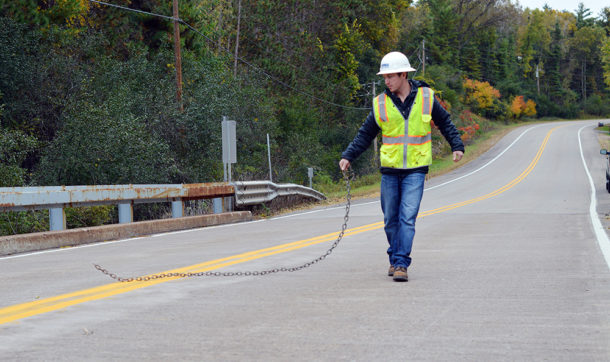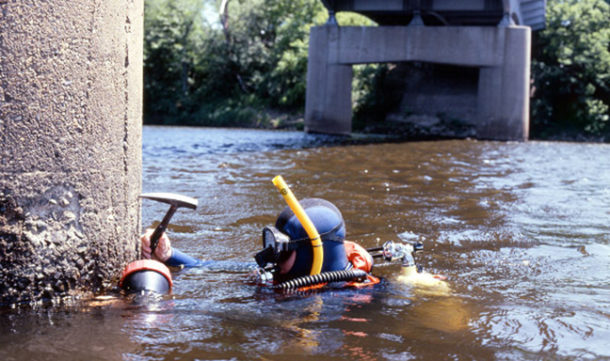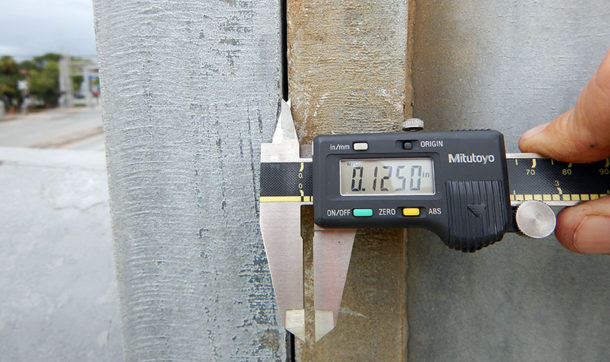Strange But True: Proven Methods Keep Structures, Public Safe

A casual observer of one of our structural inspections might think our inspectors are using strange methods or are trying their best to flush out any zombies that may be in the area. How else would you explain inspectors pounding on random spots of a bridge with a hammer or dragging a steel link chain across a bridge’s deck?
Let me assure you, there is a method to our madness. We’re doing everything we can to make sure that structure is safe for you to use it however you wish – whether you’re driving over it, walking or biking across it, or traveling underneath it.
Listening for Soundness
One of the fundamental tasks during an inspection of a structure is checking the soundness of the material below the surface. One of the ways we do this is called a chain drag, aptly named because we literally drag a steel link chain across the concrete and listen for a hollow sound that could indicate delamination of the concrete. Delamination – or what we call subsurface fracture – is a separation of the concrete from its reinforcing steel, or rebar, usually due to the corrosion of that steel.
Another method for checking the concrete’s soundness is to tap the structure at various locations with a hammer, listening for that same hollow sound that our inspectors are experts at identifying. Hammers are also used to check for soundness on wooden portions of structures.
Plenty of Tools in the Toolbox
Depending on the type of structure we’re inspecting and the desires of our clients, Ayres Associates needs to be equipped for just about anything we might find in the field. For example, on steel components of structures, we use magnetic particle and dye penetrant tools to check for cracks and flaws. These simple but highly effective testing methods don’t harm the structure’s surfaces and are known as non-destructive testing or non-destructive evaluations.

The equipment list for our structural inspection staff is quite long and ranges from basic (ladders, hammers, hard hats, ropes, boats, surface thermometers, and generators) to a little more complex (scuba gear, surface-supplied air dive equipment, micrometers, ultrasound gauges, borescopes, sonar imaging, and underwater video cameras with the ability to see through murky water.)
We also have the ability to use thermal imaging cameras, ground-penetrating radar, and unmanned aerial systems during inspections.
One tool to help clients trust in the results of the inspection of their timber bridges is the resistance microdrill, known by its trade name RESISTOGRAPH. This device checks the soundness of timber structures. For a detailed look at how the RESISTOGRAPH works, see our previous blog, RESISTOGRAPH Checks Soundness of Timber Structures.

or the width of an opening, such as a crack.
For more about our structural inspection services, contact me. And if you happen to come across one of our inspections in progress, know that the inspection methods and equipment in use are there for a purpose: to keep that structure and the public safe.
Rick Maslyn is a certified bridge inspector and supervises Ayres’ structural inspection group, providing project coordination, quality control/quality assurance, and client management. He also serves as a team leader and has inspected many large, complex, and fracture critical bridges throughout the country. With more than 32 years of experience, Rick has managed large-scale inspection projects for many years, constantly refining his group’s skills to do the work better and more efficiently.

 By
By
Post a comment: